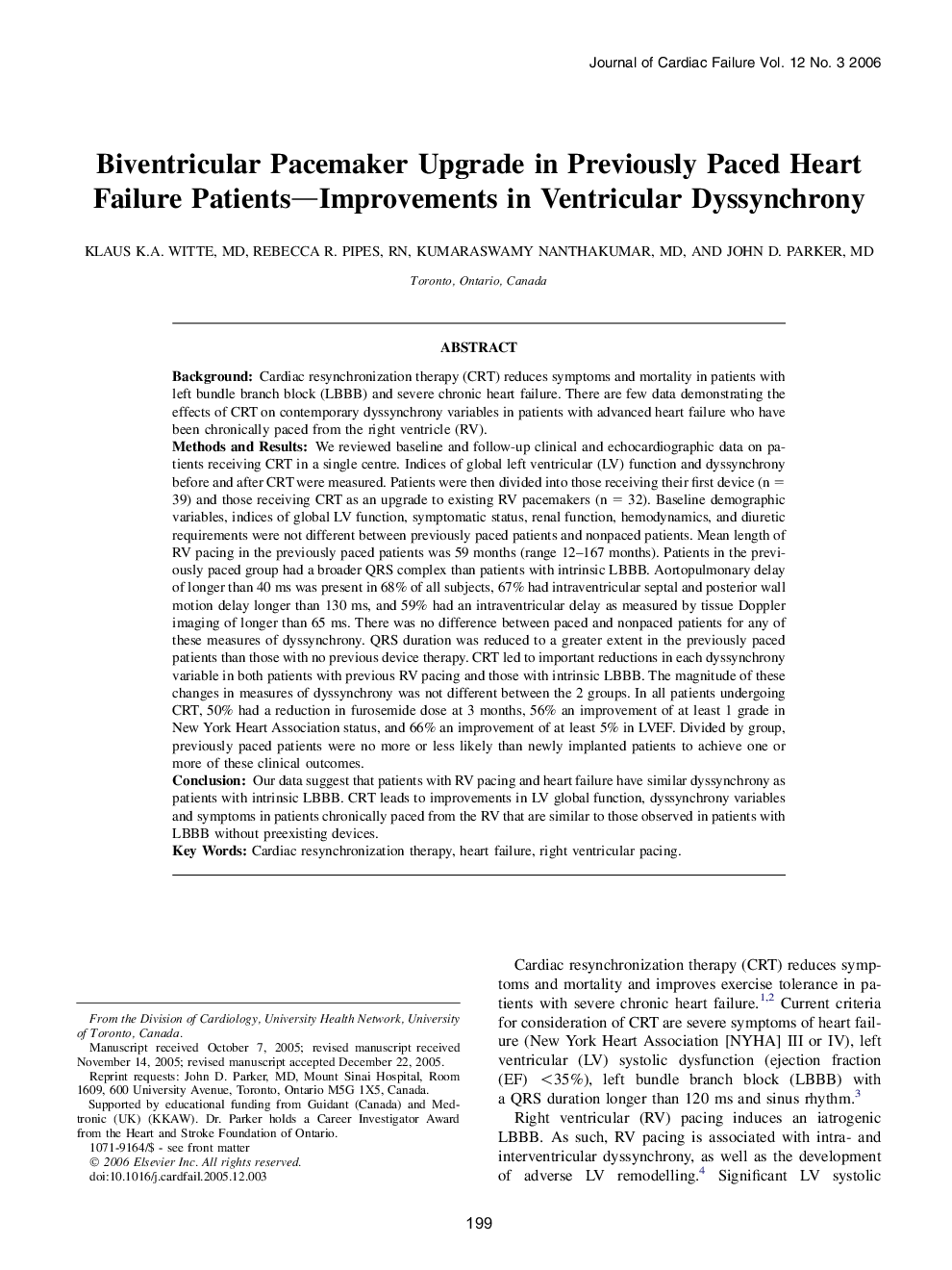| کد مقاله | کد نشریه | سال انتشار | مقاله انگلیسی | نسخه تمام متن |
|---|---|---|---|---|
| 2962110 | 1178412 | 2006 | 6 صفحه PDF | دانلود رایگان |

BackgroundCardiac resynchronization therapy (CRT) reduces symptoms and mortality in patients with left bundle branch block (LBBB) and severe chronic heart failure. There are few data demonstrating the effects of CRT on contemporary dyssynchrony variables in patients with advanced heart failure who have been chronically paced from the right ventricle (RV).Methods and ResultsWe reviewed baseline and follow-up clinical and echocardiographic data on patients receiving CRT in a single centre. Indices of global left ventricular (LV) function and dyssynchrony before and after CRT were measured. Patients were then divided into those receiving their first device (n = 39) and those receiving CRT as an upgrade to existing RV pacemakers (n = 32). Baseline demographic variables, indices of global LV function, symptomatic status, renal function, hemodynamics, and diuretic requirements were not different between previously paced patients and nonpaced patients. Mean length of RV pacing in the previously paced patients was 59 months (range 12–167 months). Patients in the previously paced group had a broader QRS complex than patients with intrinsic LBBB. Aortopulmonary delay of longer than 40 ms was present in 68% of all subjects, 67% had intraventricular septal and posterior wall motion delay longer than 130 ms, and 59% had an intraventricular delay as measured by tissue Doppler imaging of longer than 65 ms. There was no difference between paced and nonpaced patients for any of these measures of dyssynchrony. QRS duration was reduced to a greater extent in the previously paced patients than those with no previous device therapy. CRT led to important reductions in each dyssynchrony variable in both patients with previous RV pacing and those with intrinsic LBBB. The magnitude of these changes in measures of dyssynchrony was not different between the 2 groups. In all patients undergoing CRT, 50% had a reduction in furosemide dose at 3 months, 56% an improvement of at least 1 grade in New York Heart Association status, and 66% an improvement of at least 5% in LVEF. Divided by group, previously paced patients were no more or less likely than newly implanted patients to achieve one or more of these clinical outcomes.ConclusionOur data suggest that patients with RV pacing and heart failure have similar dyssynchrony as patients with intrinsic LBBB. CRT leads to improvements in LV global function, dyssynchrony variables and symptoms in patients chronically paced from the RV that are similar to those observed in patients with LBBB without preexisting devices.
Journal: Journal of Cardiac Failure - Volume 12, Issue 3, April 2006, Pages 199–204